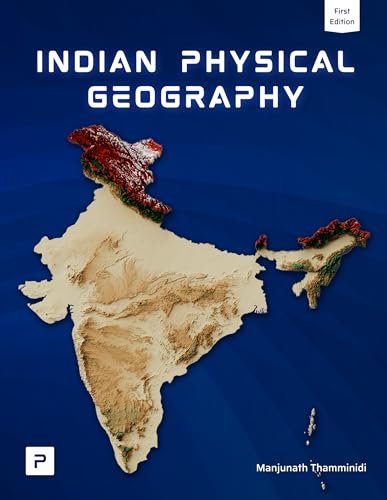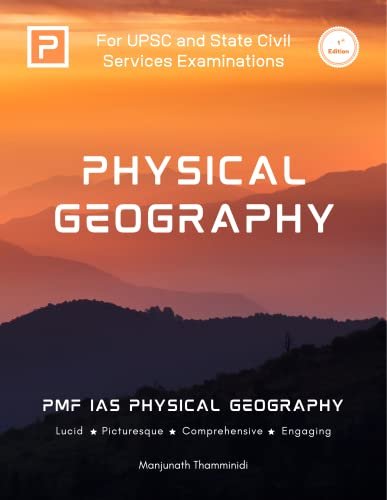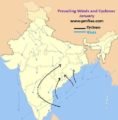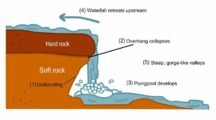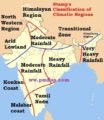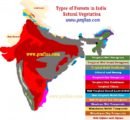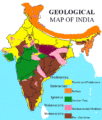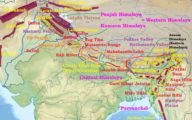
Soil Erosion: Wind and Water Erosion, Rill and Gully erosion
Subscribe to Never Miss an Important Update! Assured Discounts on New Products!
Must Join PMF IAS Telegram Channel & PMF IAS History Telegram Channel
Last updated on April 15, 2024 8:20 PM
Soil Erosion
- Soil erosion is the loosening and displacement of topsoil from the land due to the action of agents like wind and water.
- Soil erosion in nature may be a slow process (geological erosion) or a fast process promoted by human activities like overgrazing, deforestation.
- Weathering and erosion lead to the simultaneous process of ‘degradation’ and ‘aggradation’.
- Erosion is a mobile process while weathering is a static process (there is no motion of disintegrated material except the falling down under the force of gravity).
Water Erosion
- Running water is one of the main agents, which carries away soil particles.
- Soil erosion by water occurs by means of raindrops, waves or ice.
- Erosion by water is termed differently according to the intensity and nature of erosion: raindrop erosion, sheet erosion, rill and gully erosion, stream bank erosion, landslides, coastal erosion, glacial erosion.
Raindrop erosion or splash erosion
- A raindrop is approximately 5 mm in diameter and hits the soil at a velocity of 32 km/hr. Larger raindrops and gusts of wind hit the soil surface even at higher velocities.
- Raindrops behave like tiny bombs when falling on exposed soil, displace soil particles and destroy soil structure.
- Presence of vegetation on land prevents raindrops from falling directly on the soil thus erosion of soil in areas covered by vegetation is prevented.
Sheet erosion
- With continued rainfall the displaced soil particles fill in the spaces between soil particles and prevent water from seeping into the soil. This results in surface runoff and even more erosion.
- The detachment and transportation of soil particles by flowing rainwater is called sheet or wash off erosion.
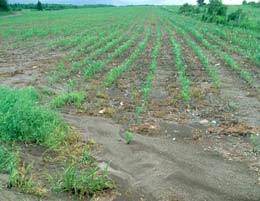
- Weathering and erosion tend to level down the irregularities of landforms and create a peneplane.
Rill and gully erosion
- In rill erosion finger like rills appear on the cultivated land after it has undergone sheet erosion.
- These rills are usually smoothened out every year while forming.
- Each year the rills slowly increase in number become wider and deeper.
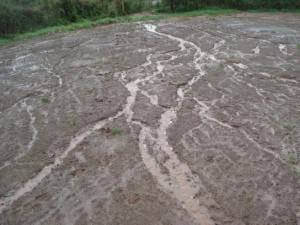
- Gully erosion is the removal of soil along drainage lines by surface water runoff.
- When rills increase in size, they become gullies. Once started, gullies will continue to move by headward erosion or by slumping of the side walls.
- Gullies formed over a large area gives rise to badland topography (Chambal Ravines).
- When a gully bed is eroded further due to headward erosion, the bed gradually deepens and flattens out, and a ravine is formed. The depth of a ravine may extend to 30 metres or more.
- Further erosion of ravine beds gives rise to canyons. Canyons are few hundred meters deep and wide. (Grand Canyon on Colorado River).
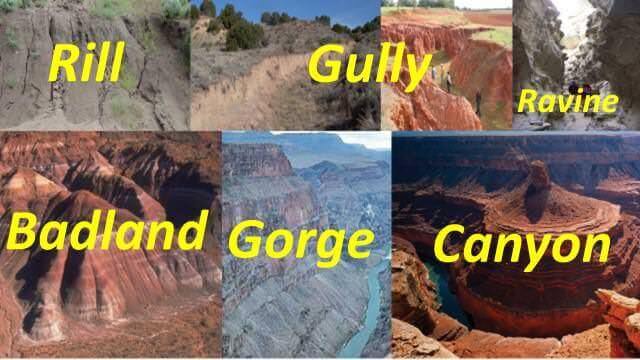
Streambank erosion
- The erosion of soil from the banks (shores) of the streams or rivers due to the flowing water is called bank erosion.
- In certain areas where the river changes its course, the river banks get eroded at a rapid rate.
- Streambank erosion damages the adjoining agricultural lands, highways and bridges.
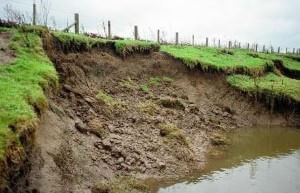
Landslide
- The sudden mass movement of soil is called a landslide.
- Landslides occur due to instability or loss of balance of land mass with respect to gravity.
- The loss in balance occurred mainly due to excessive water or moisture in the earth mass.
- Gravity acts on such an unstable landmass and causes the large chunks of surface materials such as soil and rocks to slide down rapidly.
Coastal erosion
- In the coastal areas, waves dash along the coast and cause heavy damage to the soil.
- During the landfall of cyclones, storm surges destroy beaches and wash away the top layer.
- In estuaries, tidal bores cause extensive damage to the surrounding banks.
Glacial erosion
- In the polar regions and high mountainous regions like the Himalayas, soil erosion is caused by sowing moving glaciers. This is called glacial erosion.
Wind Erosion
- Wind erosion or aeolian erosion is quite significant in arid and semi-arid regions.
- Winds usually blow at high speeds in deserts due to the absence of physical obstruction.
- These winds remove the fertile, arable, loose soils leaving behind a depression devoid of topsoil.
- The depression formation in deserts is the first step in Oasis formation. Oasis forms in depressions when there is underground water that gets accumulated above rocks.
- Very fine and medium sands are moved by wind in a succession of bounds and leaps, known as saltation.
- Small sand and dust particles are transported over long distances through the air by a process known as suspension.
- Coarse sand is not usually airborne but rather is rolled along the soil surface. This type of erosion is called surface creep.
- Very coarse sand and gravels are too large to be rolled by wind, so wind-eroded soils have surfaces covered with coarse fragments. This kind of arid soil surface is known as desert pavement.
Last updated on April 15, 2024 8:20 PM





